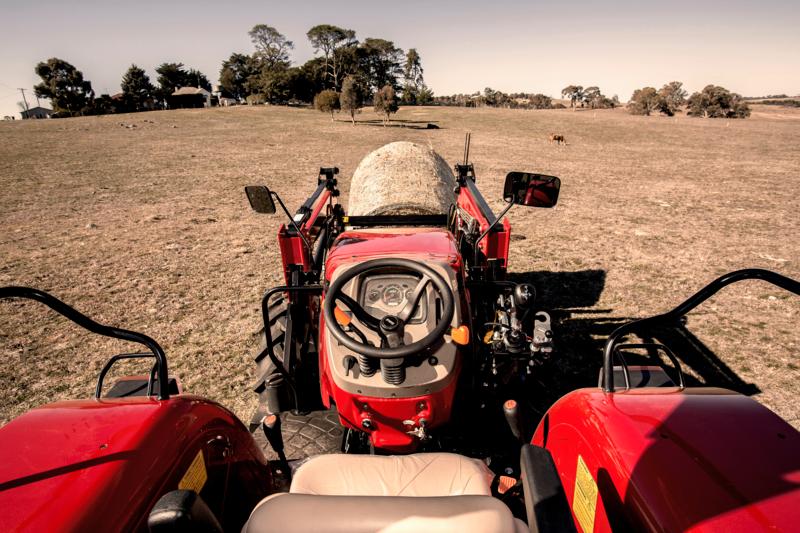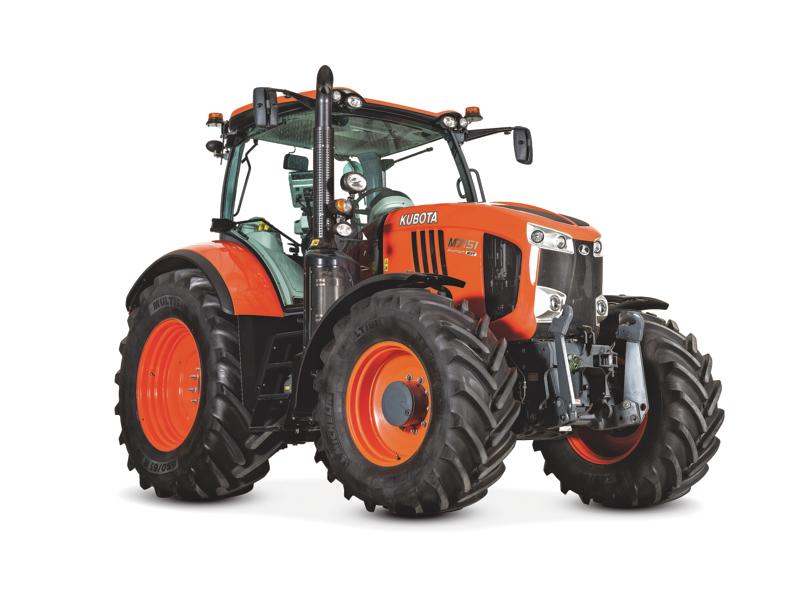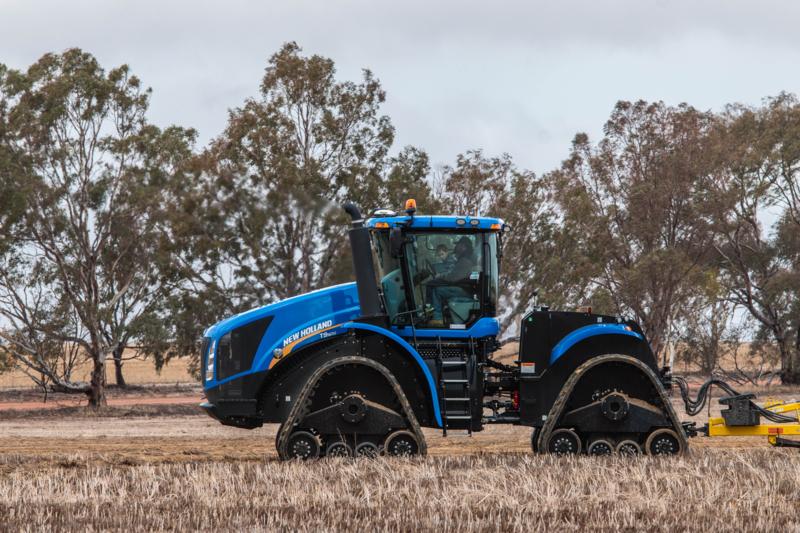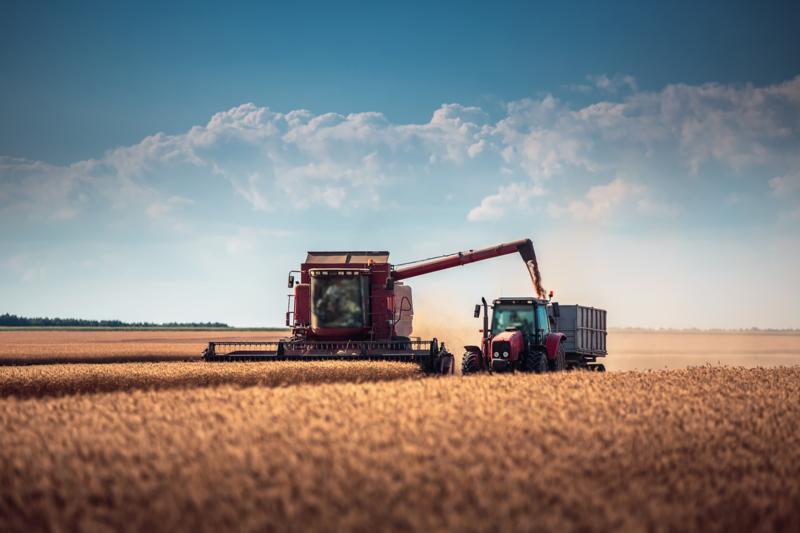GEARING up for an uncertain season is tough but commodity values and demand are at an all-time high, so there’s still need for ongoing investment. However, even with a selection of interest-free loans, farmers still need to dig deep to cover costs – and AgQuip shoppers were savvy in their approach. Planning for multiple production scenarios, greater farming flexibility and more efficient management meant versatility was high on the shopping list.
Versatility means fewer hands on deck, fewer machines in the paddock and, at the end of the day, more dollars in the bank. For mixed farming operations, horticulturist and hobby farmers, the tractor was the go-to investment; particularly a machine with fuel efficiency and flexibility for multiple uses.
FARM MACHINERY BUYING PATTERNS
Fifth-generation Uralla grazier Chris Laurie, who runs mostly Hereford cattle and Merino sheep with a few fodder crops, says with the prolonged dry period people are tightening their belts and thinking twice about what they’re buying. “This year’s AgQuip was probably a little bit quieter than normal,” he says. “In terms of confidence, I think people are still buying, but not what they’d normally be buying.”
“You’ve got to chase efficiency when you’re picking something. Whether it’s a tractor or a truck, it’s got to be able to do exactly what you want it to do. Otherwise there’s no point in having it.”
With 0% finance offers about, Chris says dealers are obviously struggling to move their stock. “If you’ve got the money, it’s definitely in your favour because you can save thousands down the track,” he says. “In the same setting, when it’s dry you’ve got to think, do I need it? Can I wait until it rains and the season improves?”
“When you run into dry times or commodity prices drop, you’ve got to look at how efficient your operation is. If you’ve got three tractors, you might only need one to do the job. All the extra machines are doing are increasing your operating costs.”
The alternative, Chris says, is to pay a contractor to do the job. “But, to me, that just doesn’t make any sense; the cheapest person you can get to do a job is yourself. If you’ve got a machine that can plough up a paddock or unload hay from the back of a truck, you’re far better off with that than buying something smaller and then having to pay someone else to do it.”
*READ MORE about drought affected farmers adapting during dry conditions:
VERSATILE TRACTORS TOP OF MIND
With an impressive red-and-black branded site and an abundance of oversized showbags, Case IH saw a lot of traffic at AgQuip. “There was particular interest in the smaller horsepower offerings and, with the demand for hay, the balers also had a lot of interest,” says Seamus McCarthy, Case IH Australia New Zealand mid-horsepower and compact tractors product manager.

The Case IH Farmall JXM made its debut at AgQuip. The robust tractor features durable components and plenty of power in two diesel horsepower (hp) options: a 90hp, 3.9-litre, four-cylinder engine, which is turbocharged and intercooled, and a 75hp, 2.9-litre, three-cylinder engine. Both come with two-speed power take-off (PTO) options – 540 and 540 eco – that help boost fuel efficiency. The JXM 75hp costs about $36,000 while the 90hp model is up to $43,000.
“This is a value-line tractor that’s easy to operate but it offers a lot of capabilities in relation to size, power and hydraulic flow,” Seamus says. “The PTO options are best used for light work. Whether that be a post hole digger or a slasher, this means more power and less torque.”
The Farmall JXM stands out from the Farmall C, U and JX models, Seamus says, because it offers value and productivity benefits across broad applications, but with a more basic operator interface. “It suits lifestyle and hobby farmers, graziers and veggies farmers who need the transmission option to have a creeper installed.” He says this allows speeds as low as 280m per hour for the likes of broccoli farmers who need to walk behind the tractor to cut and place broccoli in the bin.
*READ about innovations in farming that are helping farmers cut costs and increase efficiency:
SUSTAINABLE FARMING FOOTPRINT
Another hardworking contender is Kubota’s M7-1 tractor, which has a powerful 6.1-litre, four-cylinder diesel engine incorporating clean-air technology. The M7-1 comes in three variants, 130hp, 150hp and 170hp, with an entry level model starting at $130,290.

Promoted by Kubota as a revolutionary series, and its most powerful tractor, the M7-1 raises the bar for mid-sized tractors, from entry level through to precision-farming-ready premium models topped with KVT variable transmission. The series promises a balance between comfort, power and price that drives home Kubota’s message for a more sustainable farming footprint.
HIGH HORSEPOWER TRACTORS FOR ALL JOBS
Often farmers need specialised equipment with a heftier price tag. New Holland’s new SmartTrax II T9 series, launched at FarmFest in June, is a one-of-a-kind beast for more demanding operations. The two-track, two-belt, 5cm agricultural lug tread suits various terrains and farming applications. At around $600,000, excluding bells and whistles, this luxury 4WD doesn’t come cheap but with its second-to-none traction and pulling capability, it could prove cost-effective for those willing to fork out the extra cash.

New Holland combines and high-horsepower product manager Marc Smith says AgQuip was quieter than usual this year but there was still interest in hay machinery and mid-sized tractors.
“With regards to broadacre equipment, the T9 SmartTrax certainly created some interest as it’s a very new product for New Holland. People are intrigued by different designs and always looking for the best solution to meet their farming applications,” he says. “The T9 operates extremely well where conditions call for maximum tractive effort, like deep ripping and seeding, particularly in loose sandy soils, offering increased flotation with reduced soil compaction.”
Over the past five years, as more manufacturers have come on board with track solutions in 4WD articulated tractors, Marc says New Holland has seen an increase in track sales. And, like many of its competitors, New Holland has lured customers with in-store rebates when purchasing any of the T-series tractors.
WEIGHING UP THE PRICE OF FARM EQUIPMENT
For some farmers, leasing equipment makes better economic sense than buying, particularly in this climate says Isabella McDougall, NSW Farmers’ policy advisor – rural affairs, and business, economics and trade. “Most people aren’t buying near million-dollar tractors and grain headers, it’s just not cost-effective,” Isabella says.

Commonwealth Bank executive general manager of regional and agribusiness Grant Cairns says farmers are thinking about costs beyond just the price of the equipment and financing and focusing as much time evaluating fuel costs, maintenance, and depreciation.
“Some customers want flexibility to pay down large amounts when stock moves or crops come in. In that case, a floating or variable rate [repayment] can be very useful. Others want to lock in certainty and repayments that will not change so a fixed rate is used,” Grant says.
“It’s also about the seasonal changes in their cash flow and the effective life of the machinery.”
RELATED ARTICLE: "
Hefty tax demands penalise young farmers"
ALTERNATIVE FARMING FINANCE - THE SHARED ECONOMY
Finding alternative methods of accessing equipment may become a growing trend in Australia if dry conditions persist, for example buying with a neighbour, joining a co-operative or accessing interest-free equipment loans.
“The sharing economy is becoming a growing discussion point in Australia and we think we will see more ownership sharing in the future,” Grant says.
Commonwealth Bank’s
latest research shows that more than half (53%) of agribusinesses say they intend to share ownership of assets to cut costs, although only (14%) are already doing so. Findings also show more agribusinesses (91%) are looking overseas to buy both new and used equipment.
“There’s definitely an appetite to understand how to finance new purchases more effectively and to better manage asset ownership and shared usage – especially where the challenges of seasonal availability can be solved.”
Chris Laurie says sharing could work for farmers needing the same type of machine but the downsides are it may not be returned in the same condition and may not be available when a farmer wants it. For now, Isabella McDougall says farmers are continuing to maintain what they own.